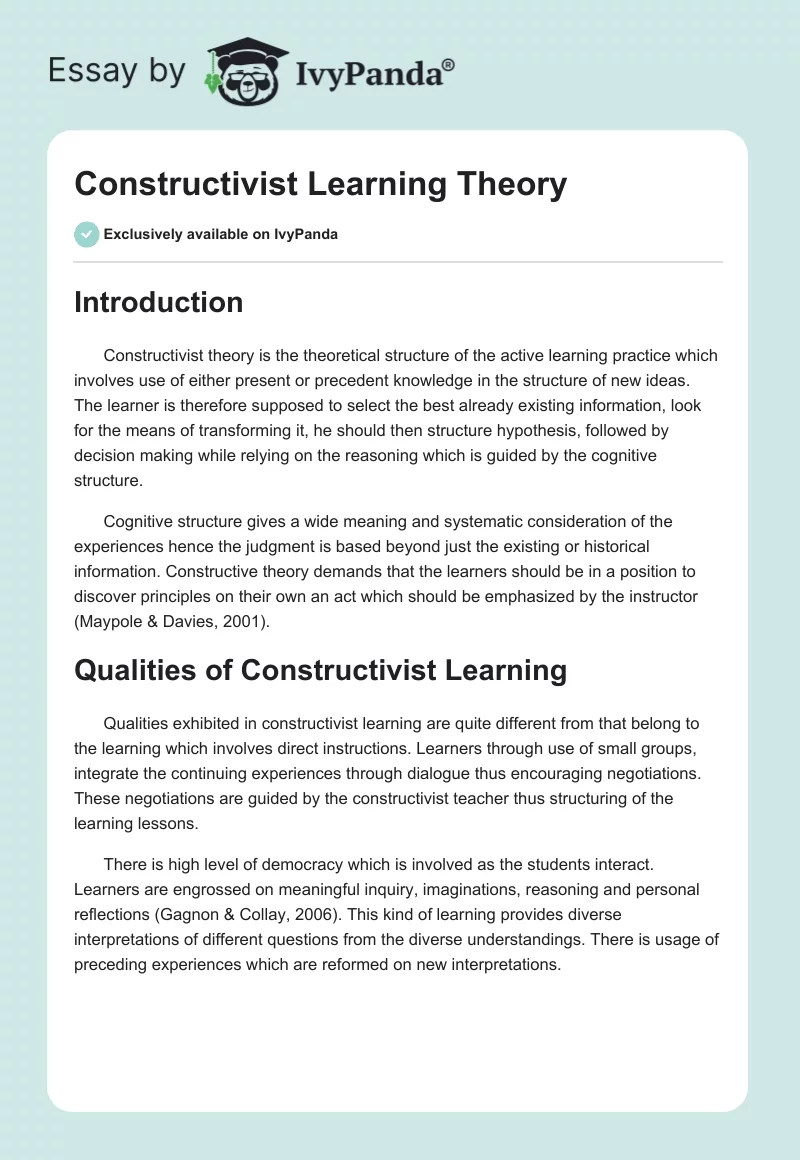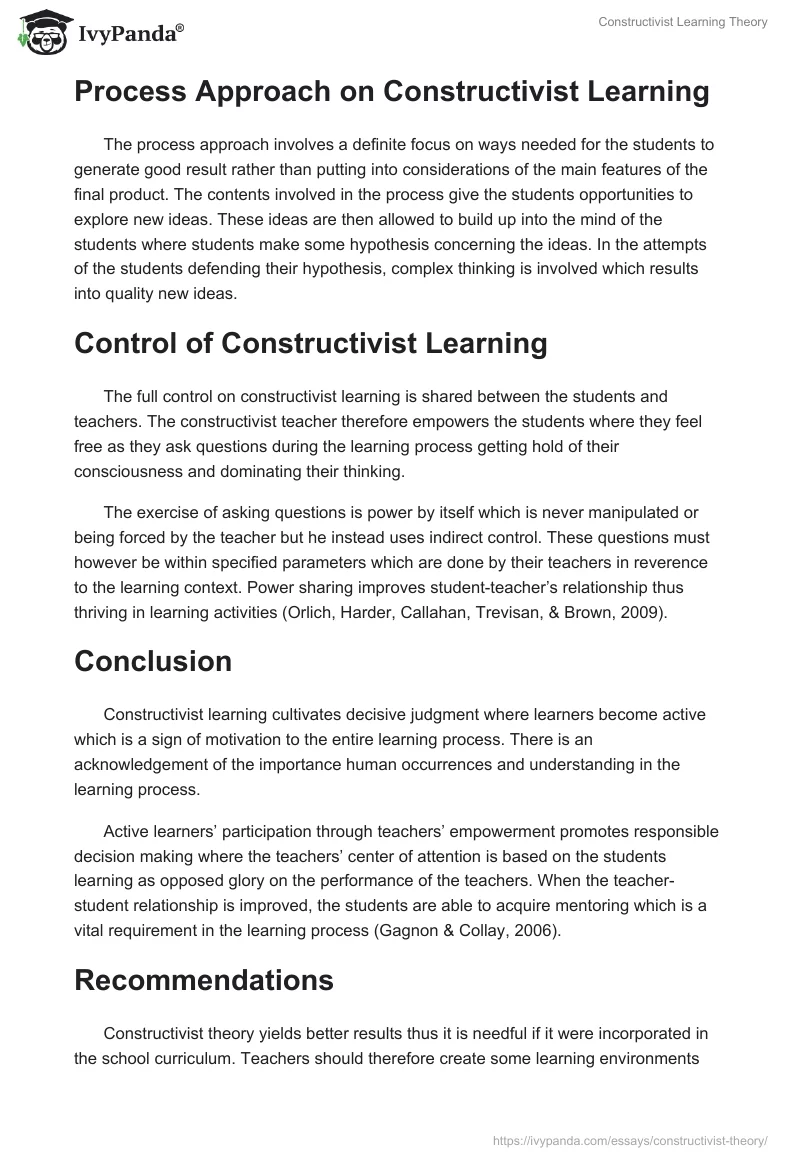Introduction
Constructivist theory is the theoretical structure of the active learning practice which involves use of either present or precedent knowledge in the structure of new ideas. The learner is therefore supposed to select the best already existing information, look for the means of transforming it, he should then structure hypothesis, followed by decision making while relying on the reasoning which is guided by the cognitive structure.
Cognitive structure gives a wide meaning and systematic consideration of the experiences hence the judgment is based beyond just the existing or historical information. Constructive theory demands that the learners should be in a position to discover principles on their own an act which should be emphasized by the instructor (Maypole & Davies, 2001).
Qualities of Constructivist Learning
Qualities exhibited in constructivist learning are quite different from that belong to the learning which involves direct instructions. Learners through use of small groups, integrate the continuing experiences through dialogue thus encouraging negotiations. These negotiations are guided by the constructivist teacher thus structuring of the learning lessons.
There is high level of democracy which is involved as the students interact. Learners are engrossed on meaningful inquiry, imaginations, reasoning and personal reflections (Gagnon & Collay, 2006). This kind of learning provides diverse interpretations of different questions from the diverse understandings. There is usage of preceding experiences which are reformed on new interpretations.
Process Approach on Constructivist Learning
The process approach involves a definite focus on ways needed for the students to generate good result rather than putting into considerations of the main features of the final product. The contents involved in the process give the students opportunities to explore new ideas. These ideas are then allowed to build up into the mind of the students where students make some hypothesis concerning the ideas. In the attempts of the students defending their hypothesis, complex thinking is involved which results into quality new ideas.
Control of Constructivist Learning
The full control on constructivist learning is shared between the students and teachers. The constructivist teacher therefore empowers the students where they feel free as they ask questions during the learning process getting hold of their consciousness and dominating their thinking.
The exercise of asking questions is power by itself which is never manipulated or being forced by the teacher but he instead uses indirect control. These questions must however be within specified parameters which are done by their teachers in reverence to the learning context. Power sharing improves student-teacher’s relationship thus thriving in learning activities (Orlich, Harder, Callahan, Trevisan, & Brown, 2009).
Conclusion
Constructivist learning cultivates decisive judgment where learners become active which is a sign of motivation to the entire learning process. There is an acknowledgement of the importance human occurrences and understanding in the learning process.
Active learners’ participation through teachers’ empowerment promotes responsible decision making where the teachers’ center of attention is based on the students learning as opposed glory on the performance of the teachers. When the teacher-student relationship is improved, the students are able to acquire mentoring which is a vital requirement in the learning process (Gagnon & Collay, 2006).
Recommendations
Constructivist theory yields better results thus it is needful if it were incorporated in the school curriculum. Teachers should therefore create some learning environments where students are in positions to develop and make use of their knowledge. The approach should therefore be used so as to create students who are self-directed, curious scholarly thinkers by development of questions explore and examination of various experiences thus making judgmental reasoning.
References
Gagnon, G. W., & Collay, M. (2006). Constructivist learning design: key questions for teaching to standards. Nwe York: Corwin Press.
Maypole, J., & Davies, T. G. (2001). Students’ perceptions of constructivist learning in a community college American History II survey course. Web.
Orlich, D. C., Harder, R. J., Callahan, R. C., Trevisan, M. S., & Brown, A. H. (2009). Teaching Strategies: A Guide to Effective Instruction. London: Cengage Learning.


